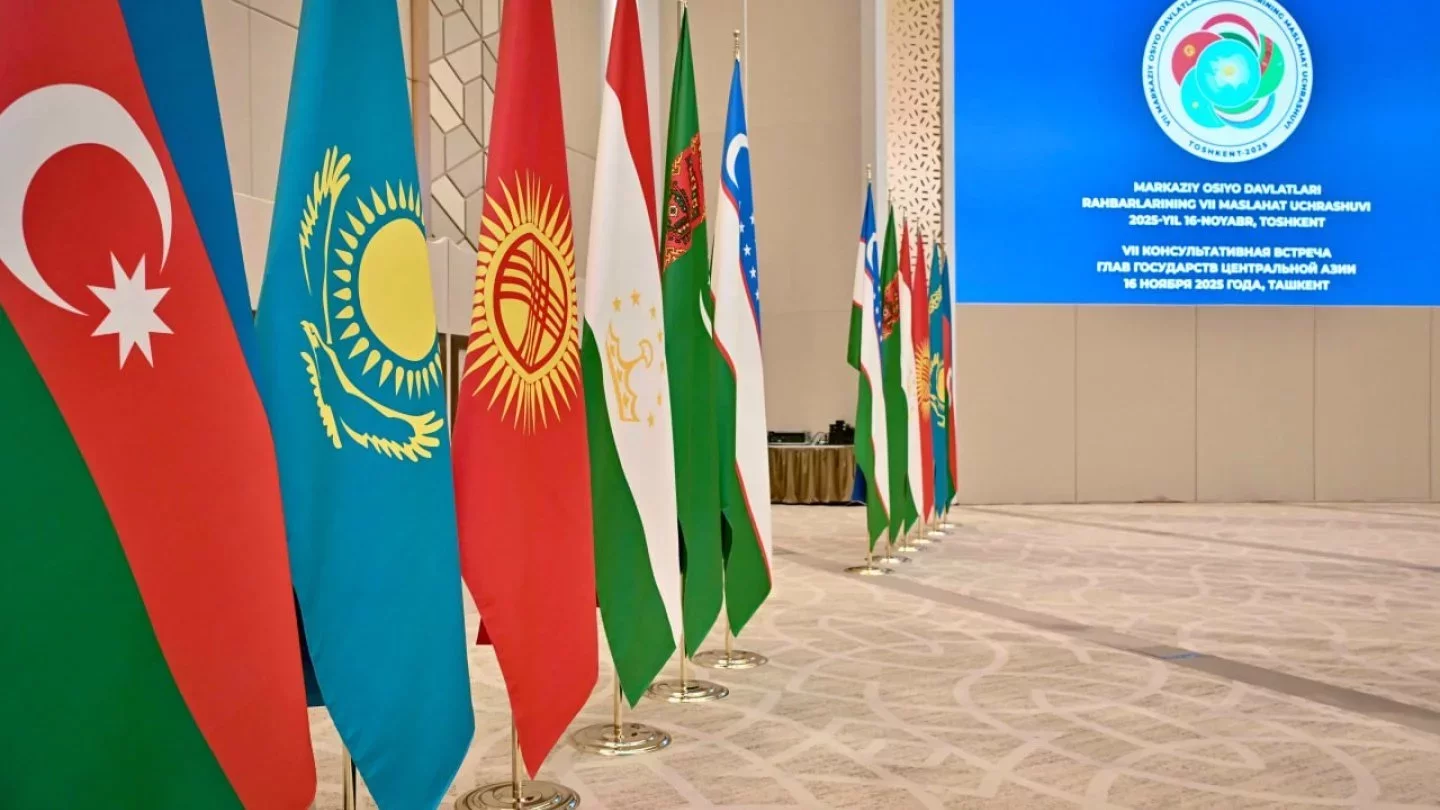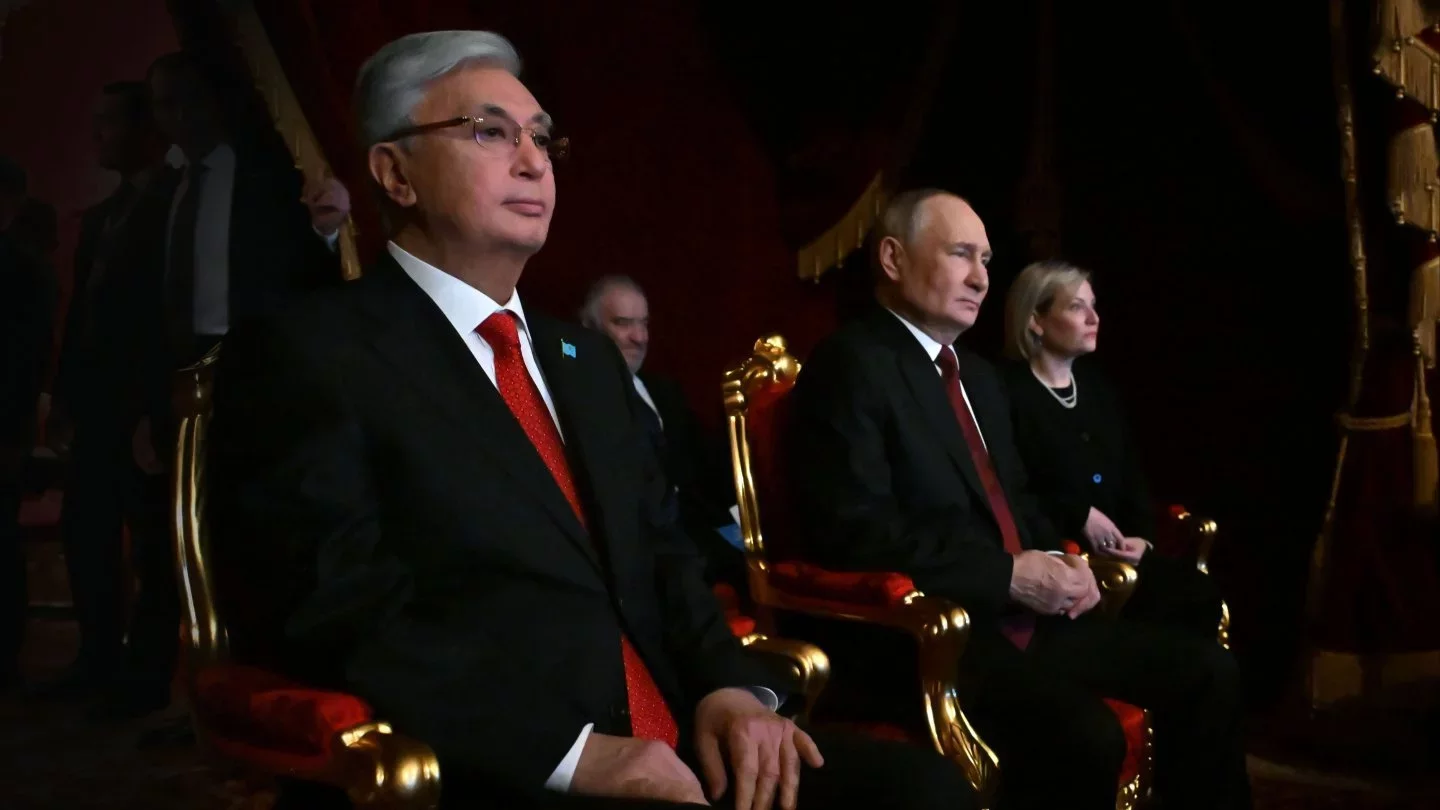Beyond Old Alliances: Can Central Asia Build a New Regional Architecture?
 Photo: Orda Collage
Photo: Orda Collage
When major summits take place in the region, official reports usually reduce everything to a diplomatic minimum: “discussed,” “confirmed,” “expressed readiness.”
Such a formula can hide an attempt to reshape the region’s entire architecture.
The “Central Asia plus Azerbaijan” summit is one such moment. Political scientist and Orda.kz columnist Islam Kurayev analyzes not the protocol, but the motivations behind the decisions.

A Return to The Ideas First Raised in 2017
The Tashkent meeting fits within Kazakhstan’s foreign policy corridor stretching from Washington to Moscow. Against this backdrop, expanding the format is not simply another agenda item — it is an attempt to build a third, independent framework for the region instead of relying on long-established external players.
To understand today’s format, it is necessary to return to 2017, when the region began reshaping itself after many stagnant years. A newly revitalized Tashkent promoted openness and regional dialogue.
At the 72nd UN General Assembly, Shavkat Mirziyoyev framed Central Asia as a unified space rather than a cluster of isolated post-Soviet states.
Shortly afterward, the five foreign ministers signed a cooperation program for 2018–2019, marking the first step toward regular political dialogue. In 2018, the first Consultative Meeting of Heads of State took place — the region’s leaders gathering without external power centers for the first time in a decade.
This laid the foundation for “soft regionalism”: coordination without supranational structures.
At the same time, experts discussed a broader “Central Asia–South Caucasus” corridor and the idea of integrating the Caspian Sea into a single infrastructure axis, with Azerbaijan as a natural complement.
But the region lacked the political maturity and external pressures needed to advance the idea beyond theory.
Today’s format revives those concepts, enriched by accumulated diplomatic capital and a significantly more challenging geopolitical environment.
Why Now?
The current summit is a direct response to the shifting foreign policy landscape. Central Asia has emerged as an independent strategic arena for major global players: EU summits, China’s expanding agenda, and the C5+1 format with the United States, where the region is treated not as individual states but as a bloc.
Meanwhile, competition for transit, resources, and influence has intensified. The region must navigate between Washington, Moscow, Beijing, and Brussels — each imposing its own expectations and rules.
Kazakhstan, in particular, finds itself at the center of it all.
Toqayev’s visit to Washington, followed by meetings in Moscow, signals the scale of external pressure on Astana and on the region as a whole.

In this context, the Central Asian format is not an alternative but a necessity: without a common framework, multivector diplomacy becomes reactive rather than balanced.
Toqayev’s Role: Building a Regional Vector
Under President Qasym-Jomart Toqayev, Kazakhstan has stopped viewing Central Asia as a secondary priority.
On issues such as water, borders, energy, and logistics, Astana has become a key moderator. For Toqayev, discussions about the region’s future must take place not only in Washington or Moscow, but within Central Asia itself.
The Tashkent summit is part of this strategy: an effort to shape a regional framework for security and development rather than serve as a platform for competing global interests.
Why Azerbaijan?
Azerbaijan’s inclusion reflects the geopolitical and economic realities of recent years. Baku has become a central hub in trans-Caspian logistics: most Central Asian cargo heading to Europe already passes through Azerbaijan.
Energy, transport, and communications networks form a genuine system of interdependence.
Recognizing Baku as a full participant acknowledges that the region is no longer limited to five countries. Transit routes, energy corridors, and foreign policy strategies have tied Central Asia and the South Caucasus more closely than previously assumed.
Azerbaijan brings not only logistical importance but also experience navigating between Türkiye, the EU, Iran, and Russia — strengthening the format’s resilience and pulling it away from a purely post-Soviet frame.
Three Trends Behind The Diplomatic Formalities
The region is more connected than eight years ago. Meetings are now routine, trade is expanding, and political channels are functioning. Yet this remains coordination without integration — sovereignty is a red line.
External pressure has intensified. Russia seeks to maintain influence despite sanctions; the U.S. pursues minerals and technology; the EU views the Trans-Caspian Corridor as an alternative to Russian routes. Central Asia has become a battleground for multiple strategic agendas.
Regional states aim to turn pressure into opportunity. Instead of dependency, they seek to leverage external interest to strengthen their own agency. That is the essence of the current format: a regional platform controlled by the region itself.
Still, vulnerabilities remain: water, migration, borders, and energy are all areas that major powers can exploit.
What’s Next? Three Scenarios
Positive scenario:
Countries modernize ports, railways, digital networks, and energy systems. The “Middle Corridor” becomes a functioning structure rather than a concept.
The format develops into a true regional hub with political agency.
Cautious scenario:
Investment is limited, decisions lack coordination, and bureaucracy dominates. The format remains “soft”—meetings continue, but progress is slow.
Negative scenario:
The format becomes a “photo club.” Declarations are made, but real decisions follow old bilateral patterns (Astana–Moscow, Tashkent–Beijing).
The format remains symbolic.
Institutionalization: Breakthrough or Illusion?
Mirziyoyev’s proposal to transform the format into a Central Asian community is the first step toward an actual structure. A secretariat, council of elders, and special representatives could turn consultations into a functioning mechanism.
However, will it have real powers or only symbolic value? Will it coordinate regional policy, or be overshadowed by the EAEU, CSTO, and SCO?
If institutionalization remains soft and network-based — without ceding sovereignty but creating a stable coordination platform — it could be a major leap forward.
Otherwise, the format risks becoming an empty brand.
Summary
The attempt to create a new regional configuration in 2017 did not materialize. Today, Central Asia faces a similar crossroads, but with far higher stakes: competing external agendas, competition for transit routes, and pressure over resources and technology.
The “Central Asia plus Azerbaijan” summit is a chance to turn the region’s accumulated diplomatic capital into a real structure. Azerbaijan adds an interregional dimension, Toqayev strengthens the political vector, and Mirziyoyev pushes institutionalization.
If Astana, Tashkent, Baku, and other capitals succeed in filling the format with real projects, a new Eurasian architecture may emerge. If not, the region will return to a familiar pattern: speaking about unity more loudly than demonstrating it.
Original Author: Islam Kurayev
Latest news
- Beyond Old Alliances: Can Central Asia Build a New Regional Architecture?
- Yana Legkodimova: Lawyer Targeted by Fake Facebook Post Announcing Her Death
- Defense Minister Explains Measures After Recent Findings of Debris Resembling Drone
- Pashinyan Posts Video With Kazakh Song Ahead of Meeting With Toqayev
- Kazakh-Born Volunteer Dies In Ukraine — Kazakh Community In Kharkiv
- France Seeks Role in Kazakhstan’s Second Nuclear Plant
- CSTO Secretary General Meets Japarov in Bishkek Ahead of November 27 Security Council Session
- Peace Proposal: Zelenskyy Plans Talks With U.S. President
- Temirtau Paramedics Protest Working Conditions
- Ural Motorcycles Will No Longer Be Produced in Kazakhstan
- Rakhmanov Springs: When Will the Resort Finally Reopen for Ordinary Visitors?
- Expert: Pashinyan’s Visit to Kazakhstan Could Have Quiet Strategic Goals Beyond Official Agenda
- China Vows Tighter Oversight of Its Companies in Kyrgyzstan After Worker Clash
- Defense Minister Comments on Soldiers' Deaths and Mothers’ Protest
- East Kazakhstan Akim Outlines 10 Billion Tenge Plan to Improve Regional Ecology
- Parliamentary Reform Working Group to Meet on December 2
- Afghan Media: Taliban Asked Tajikistan to Recognize Their Government During Kabul Meetings
- East Kazakhstan Akim Responds After Activist Denied Timely Permission for Protest Against Time Change
- Russian Public Figures Plan Appeal Over Aslan Tolegenov’s Sentence, Expert Says It Holds No Weight in Kazakhstan
- OFAC Sets Conditions for Sale of Lukoil’s Foreign Assets

